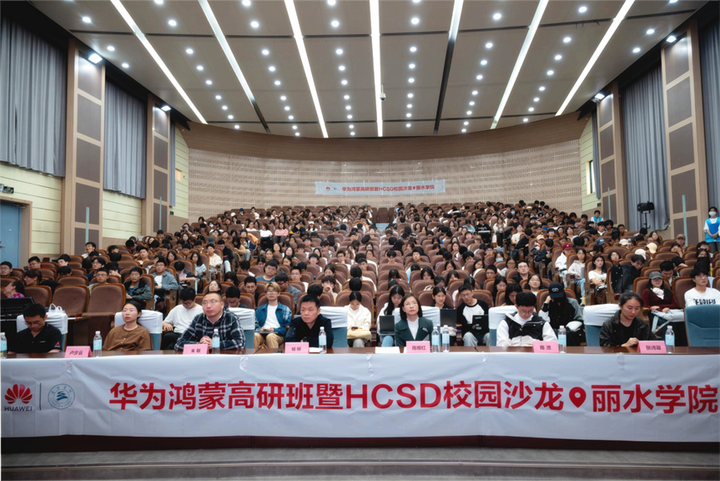spring注入list集合
spring可以帮助我们自动的完成bean属性的注入,其中有一个比较特殊的,就是list集合spring中,在使用@Autowired注解注入list集合的时候,并不会根据注入属性值的类型去容器中查找,而是根据list集合的元素类型,从spring容器中找到所有的实现类,放在list集合中,然后注入到bean中...
spring在帮我们管理bean的时候,会帮我们完成自动注入,其中有一个比较特殊的类型:list
这篇笔记主要记录spring注入list集合的原理
应用
public interface Rest {
}
@Component
public class RestServiceImpl01 implements Rest{
}
@Component
public class RestServiceImpl02 implements Rest{
}
@Component
public class OrderService {
@Autowired
//@Qualifier
private List<Rest> restList;
public void test() {
System.out.println("打印注入的集合的值,restList:" + restList);
}
}
public class Test {
public static void main(String[] args) {
AnnotationConfigApplicationContext ac = new AnnotationConfigApplicationContext(AppConfig.class);
OrderService orderService = ac.getBean(OrderService.class);
orderService.test();
}
}
以上代码执行之后,打印的结果是:
打印注入的集合的值,restList:[com.spring.list.RestServiceImpl01@60611244, com.spring.list.RestServiceImpl02@3745e5c6]
spring中,在使用@Autowired注解注入list集合的时候,并不会根据List类型去容器中查找,而是根据list集合的元素类型,从spring容器中找到所有的实现类,放在list集合中,然后注入到bean中
那如果我们想要指定只注入部分bean怎么办呢?
@Component
public class OrderService {
@Autowired
@Qualifier
private List<Rest> restList;
public void test() {
System.out.println("打印注入的集合的值,restList:" + restList);
}
}
只需要把这的@Qualifier注解放开,然后在需要注入的bean上,加上这个注解
@Component
@Qualifier
public class RestServiceImpl02 implements Rest{
}
此时再运行代码:打印注入的集合的值,restList:[com.spring.list.RestServiceImpl02@d706f19]
所以这就是注入list集合bean的应用
原理
对于bean的注入,如果我们使用的是@Autowired注解,会被AutowiredAnnotationBeanPostProcessor处理
链路:
org.springframework.beans.factory.annotation.AutowiredAnnotationBeanPostProcessor#postProcessProperties
org.springframework.beans.factory.annotation.AutowiredAnnotationBeanPostProcessor.AutowiredFieldElement#inject
org.springframework.beans.factory.annotation.AutowiredAnnotationBeanPostProcessor.AutowiredFieldElement#resolveFieldValue
org.springframework.beans.factory.support.DefaultListableBeanFactory#resolveDependency
org.springframework.beans.factory.support.DefaultListableBeanFactory#doResolveDependency
在doResolveDependency方法中,有一个代码逻辑
Object multipleBeans = resolveMultipleBeans(descriptor, beanName, autowiredBeanNames, typeConverter);
if (multipleBeans != null) {
return multipleBeans;
}
这里就是来解析list类型的
org.springframework.beans.factory.support.DefaultListableBeanFactory#resolveMultipleBeans
else if (Collection.class.isAssignableFrom(type) && type.isInterface()) {
Class<?> elementType = descriptor.getResolvableType().asCollection().resolveGeneric();
if (elementType == null) {
return null;
}
// 在这里会取解析list集合中指定的接口所有的实现类
Map<String, Object> matchingBeans = findAutowireCandidates(beanName, elementType,
new MultiElementDescriptor(descriptor));
if (matchingBeans.isEmpty()) {
return null;
}
if (autowiredBeanNames != null) {
autowiredBeanNames.addAll(matchingBeans.keySet());
}
TypeConverter converter = (typeConverter != null ? typeConverter : getTypeConverter());
Object result = converter.convertIfNecessary(matchingBeans.values(), type);
if (getDependencyComparator() != null && result instanceof List) {
((List<?>) result).sort(adaptDependencyComparator(matchingBeans));
}
return result;
}
在这个方法中,这段代码是来解析list集合的,所以只截取了这一部分代码,这一部分关键的代码是:findAutowireCandidates方法
protected Map<String, Object> findAutowireCandidates(
@Nullable String beanName, Class<?> requiredType, DependencyDescriptor descriptor) {
/**
* 根据类型,获取当前beanDefinitionMap中的beanName,注意:这里是从beanDefinitionMap中获取的,并不是直接从spring
* 容器中获取
* 获取到的是待注入bean的name
*/
String[] candidateNames = BeanFactoryUtils.beanNamesForTypeIncludingAncestors(
this, requiredType, true, descriptor.isEager());
Map<String, Object> result = new LinkedHashMap<>(candidateNames.length);
/**
* resolvableDependencies:这里来遍历这个集合,判断要注入的bean是否是该类型的
* resolvableDependencies这个集合,默认有四个值
* interface org.springframework.context.ApplicationContext" -> {AnnotationConfigApplicationContext@1641}
* interface org.springframework.beans.factory.BeanFactory" -> {DefaultListableBeanFactory@1630}
* interface org.springframework.core.io.ResourceLoader" -> {AnnotationConfigApplicationContext@1641}
* interface org.springframework.context.ApplicationEventPublisher -> {AnnotationConfigApplicationContext@1641}
*/
for (Class<?> autowiringType : this.resolvableDependencies.keySet()) {
if (autowiringType.isAssignableFrom(requiredType)) {
Object autowiringValue = this.resolvableDependencies.get(autowiringType);
autowiringValue = AutowireUtils.resolveAutowiringValue(autowiringValue, requiredType);
if (requiredType.isInstance(autowiringValue)) {
result.put(ObjectUtils.identityToString(autowiringValue), autowiringValue);
break;
}
}
}
/**
* 确切的说,是在isAutowireCandidate里面对Qualifier注解进行了判断
* org.springframework.beans.factory.annotation.QualifierAnnotationAutowireCandidateResolver#isAutowireCandidate(org.springframework.beans.factory.config.BeanDefinitionHolder, org.springframework.beans.factory.config.DependencyDescriptor)
*/
for (String candidate : candidateNames) {
if (!isSelfReference(beanName, candidate) && isAutowireCandidate(candidate, descriptor)) {
addCandidateEntry(result, candidate, descriptor, requiredType);
}
}
if (result.isEmpty() && !indicatesMultipleBeans(requiredType)) {
// Consider fallback matches if the first pass failed to find anything...
DependencyDescriptor fallbackDescriptor = descriptor.forFallbackMatch();
for (String candidate : candidateNames) {
if (!isSelfReference(beanName, candidate) && isAutowireCandidate(candidate, fallbackDescriptor)) {
addCandidateEntry(result, candidate, descriptor, requiredType);
}
}
if (result.isEmpty()) {
// Consider self references as a final pass...
// but in the case of a dependency collection, not the very same bean itself.
for (String candidate : candidateNames) {
if (isSelfReference(beanName, candidate) &&
(!(descriptor instanceof MultiElementDescriptor) || !beanName.equals(candidate)) &&
isAutowireCandidate(candidate, fallbackDescriptor)) {
addCandidateEntry(result, candidate, descriptor, requiredType);
}
}
}
}
return result;
}
在源码中,就是在isAutowireCandidate()这个方法中,对@Qualifier注解进行的过滤,也就是说,如果我们在注入list集合的时候,没有添加@Qualifier注解,那这个方法都会返回true,然后将所有的实现类都返回
如果加了@Qualifier注解,这里只有加了@Qualifier注解的实现类会返回TRUE,会被返回
这个方法的实现细节,待研究,debug看源码的时候,看到这样的结果
结论
所以,在spring中,我们在注入list集合的时候,如果只加了@Autowired注解,那就会把集合元素的所有实现类都注入进来,如果想只注入指定的类,那就使用@Qualifier注解
更多推荐
 已为社区贡献1条内容
已为社区贡献1条内容









所有评论(0)